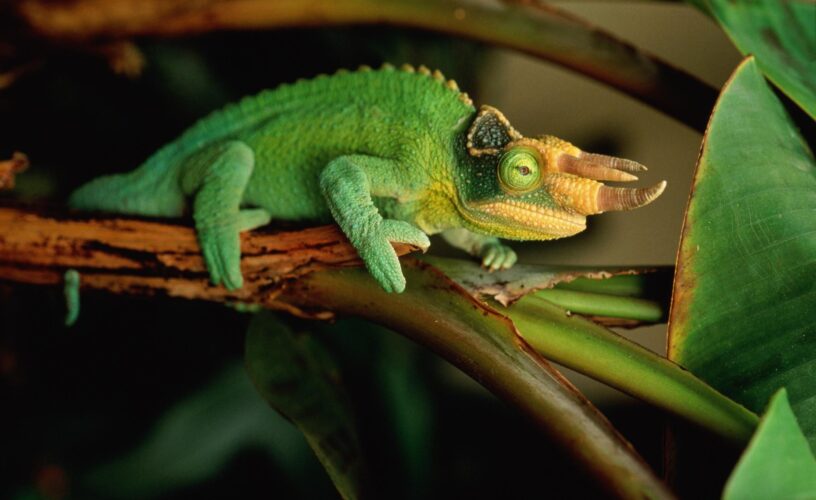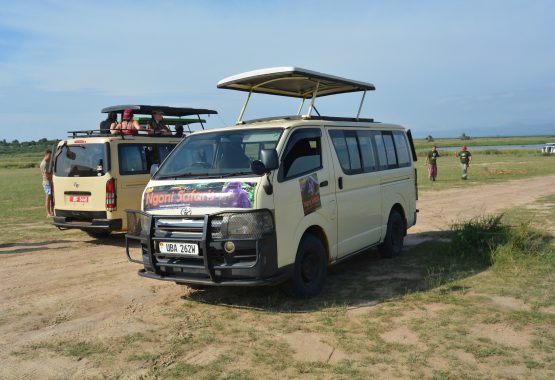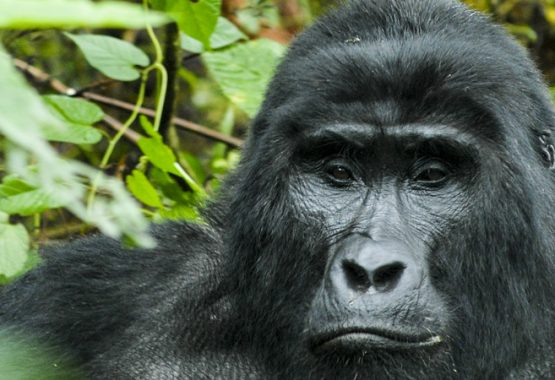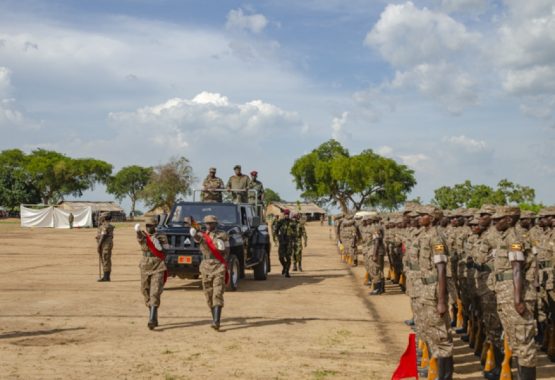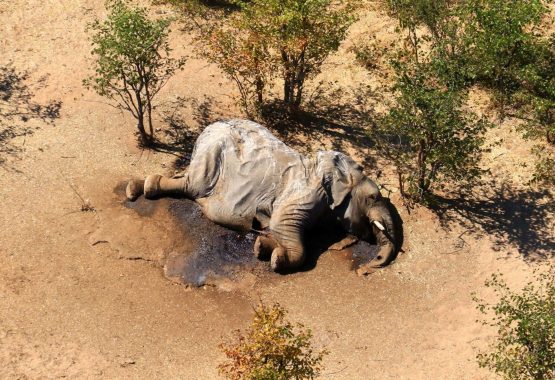Located in western Uganda near the Uganda and Democratic Republic of Congo border lays the famous Rwenzori Block Mountains. These are ranges of Block Mountains that were formed from the great faulting works of the Great Rift Valley. The peaks of the Rwenzori Mountains are snow capped and have various glacial features that usually result from glacial erosion.
The mountains have the 3rd highest peak – Stanley and are blessed with various wildlife species that live in the different ecosystems that the mountain has. Basing on that, Uganda Wildlife Authority gazetted the Rwenzori mountain area in to a national park in 1991 to enable conservation of the present wildlife species to cater for the needs of the present and future generations.
The Jackson Chameleons of the Rwenzoris and Bwindi
Rwenzori has various species that are endemic to the area including the three-horned chameleon, which is also known as the Johnston’s chameleon. Many tourists taking tours to the Rwenzoris are always fascinated by sightings of these rare chameleons.
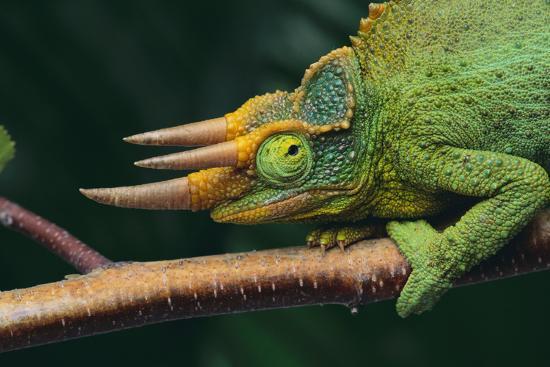
The three-horned chameleon is one of east Africa’s endemic specie that mostly dwells in places with higher altitudes at least above 3000 meters above sea level. This explains why this unique reptile in habits the slopes of the great Rwenzori Mountains.
What makes a remarkable difference between the male Johnston’s chameleon and other chameleons are its three horns at the fore head.
Just like all other chameleons, the Johnston’s chameleon is also very good at hiding using its great skills of changing color according to the environments they are in. Most chameleons use this great talent of changing color in order to hide away from their predators especially the deadly snakes and birds. They also change their color to easily hunt down their prey like small insects. The other reasons as to why chameleons change their color is as a means of communication as they try to show their moods to their fellow chameleons showing their intentions of either fighting a male counterpart or courting a female to get a mating partner and as a way of quickly adjusting to the prevailing conditions of an area especially temperature.
There are a number of Johnston’s chameleons in the Rwenzori and most times they cannot help it but display their changing color characteristics whenever in different environments. When in green vegetation they no doubt turn their skin green and when on the ground with brown soils, they also turn their color brown. With such a talent, chameleons have the rights to brag as their color tactics most times makes them invisible making them to easily make successful attacks especially when looking for food.
Facts About Johnston’s Chameleons
- Johnston’s chameleons are endemic to the Albertine region and can only be found in the Rwenzori area, Bwindi and Mgahinga in Uganda, in Rwanda and eastern democratic republic of Congo.
- The Johnston’s chameleon has a lifespan of about 5 years while in a confinement
- Between 6 to 12 months, a fully-grownJohnston’s’ chameleon can reach a length of 30 centimeters.
- They mainly feed on insects like grasshoppers, butterflies, crickets, spiders and bugs but birds and snakes usually hunt them.
- Humans, who usually destroy their habitants while others keep them in captivity, as they believe that they are magical because of their horns, threaten the Johnston’s chameleons.
- The Johnston’s chameleons tongue has unique muscles on the tip that enable it to easily trap any of the chameleons prey.
- Chameleons have unique feet among all the lizards because they are capable of gripping the tree trunks as the chameleon climbs up.
- Chameleons have eyes that are capable of rotating at 360 degrees, which means a chameleon can view in all angles even without moving. This gives them a greater chance of detecting prey in all angles.
For best views of the three-horned chameleon in Uganda, a visit to Rwenzori national park is recommended. The park is just 375 kilometers from Kampala via Kampala- fort portal.

